The Tribit StormBox Flow is another entry in the budget brand's speaker line, and once again, it could easily rank among the best speakers available today. While Tribit has a reputation for great sound and bass, the durability of its speakers is something to get excited about too. The Flow joins the ranks of other Tribit speakers we've tested, such as the StormBox 2, Micro 2, Pro andXSound Go, in having an impressive degree of resilience. In this case, it has an IP67 water and dustproof rating.
While the Flow shares the quality and IP rating of many other Tribit speakers, it's visually different to the other models. It keeps the Tribit button array of the volume controls surrounding the play/pause/skip button, but that's where many comparisons stop. It bears a striking resemblance to the Bose SoundLink Flex – a great speaker but carrying a price tag that keeps it far from our budget Bluetooth speaker round-up.
But if the Tribit Flex is inspired by the Bose design, does it come close to Bose's high-spec sound profile? Olivia is here to test it and find out if it's a simple clone or if there's a compelling reason to be more flexible and go with the flow.
 Tribit
TribitPros
- Well-built but still portable
- Big bass at the touch of a button
- Hefty battery for long listening and charging your phone
Cons
- Design is rather plain
| Drivers | 62mm driver, 50-20KHz frequency response, passive bass radiator |
| Audio power | 25W |
| Connectivity | Bluetooth 5.3 |
| Battery life | 30 hours |
| Charging time | 4 hours |
| Waterproofing | IP67, floats |
| Dimensions | 222.8 x 114.8 x 58.9 mm |
| Weight | 666g |
Tribit continues to triumph
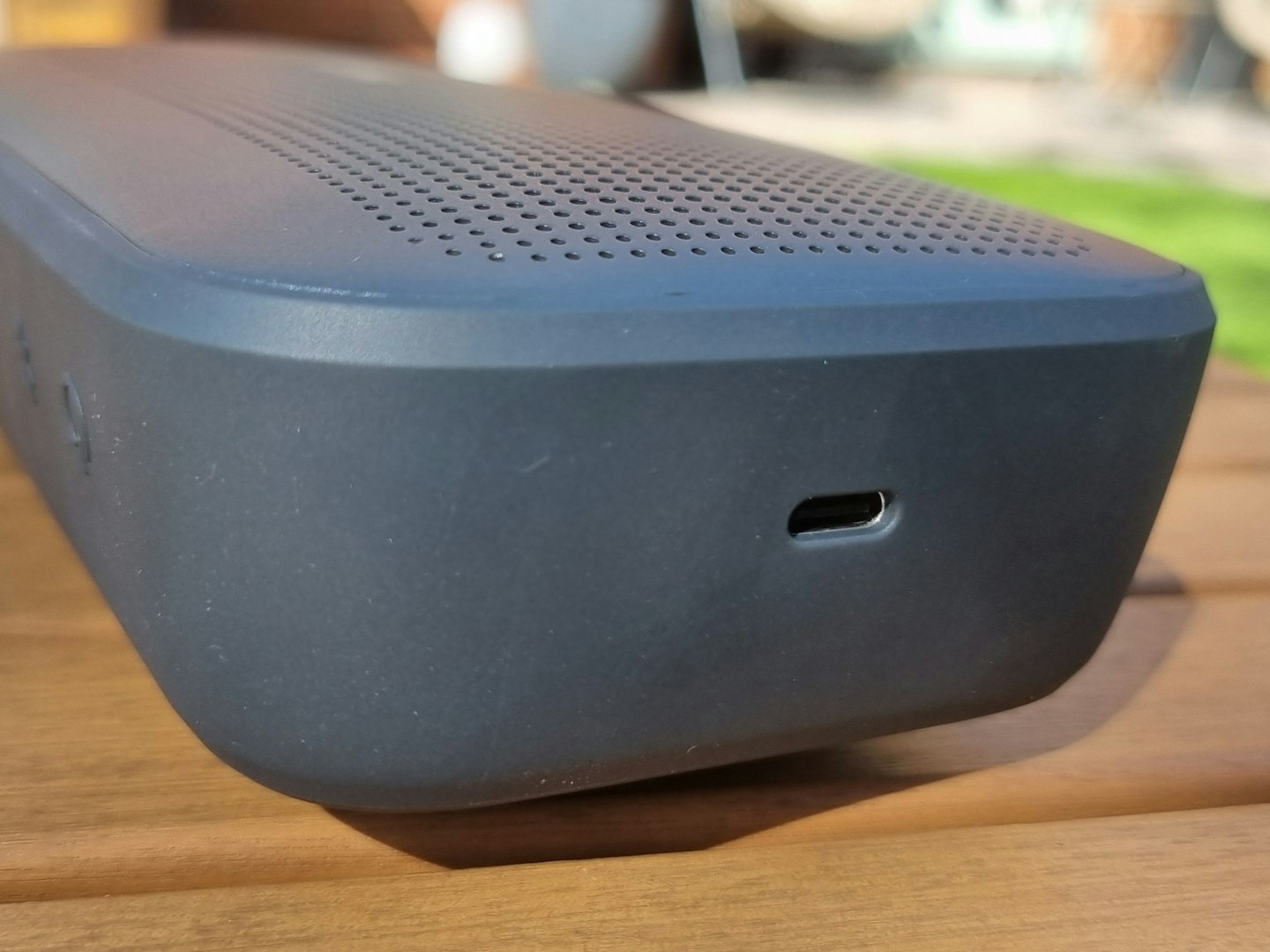
I've personally tested a Tribit speaker before, the StormBox Micro 2, and I can say that when given more space they really shine. About twice the size of the Micro 2, with a price increase of around £20, the Flow brings all the key features from the other models across. This includes the power bank feature, deep space-defying bass and simple connectivity, with the added bonus of more power (both in speakers and in battery) and a rugged exterior to take with you wherever you end up.
A repeat design choice I'm happy to see is the function of the power bank feature on the speaker. Not only is it perfect for camping trips, condensing gadgets on holiday or even just for the sheer convenience of it, it's a feature that can sometimes escape even the bigger speaker brands. It's very well executed here too, with the charging port doubling as the power output for charging your devices. This simplifies the design, as USB-C is rapidly becoming the new standard, and hopefully the hybrid-nonsense of USB-A to USB-C is on its way out. This meant the charging cable for the speaker doubled as the charging speaker for my phone when I connected it. Though my mileage varied on how quick my phone said it would charge, it was faster than it would have been had there been a USB-A connection instead.
Another well-thought-out functionality decision is the arrangement of the speakers and the bass radiators. It comes out the front and the back of the speaker with well-placed grilles, and putting your hand up to it, you can really feel the bass pumping. Tribit says that this design allows you to have the speaker facing you for individual listening, or lying down to fill a room better, and I can honestly say I heard the difference. A lot of the time, I put claims like that down to marketing, but thanks to the design and arrangement of the drivers, it allows it to project no matter the position you have it in.

Speaking of sound, the EQ button on the top allows you to toggle between 3 listening modes, standard (or whatever EQ you've made in the app), X-Bass and audiobook. I'd personally give audiobook a miss for anything, all it does is aggressively boost the mids in the EQ, which would mean that particularly low/high reading voices would be much quieter than they should be. However, the X-Bass is outstanding. Allowing you to boost the bass with the tap of a button rather than having to fuss about in an app is so handy. I like the EQ adjustment in the Tribit app, but this means that someone who just wants to boost the bass using the speaker itself can do so.
Which leads us onto the bass. Holy moley it is good. I have my normal testing songs, but for a speaker that promises a lot of bass, I like to put some good-old Cascada through (I accept the judgy looks it gets me, she’s still iconic). I set it on a table, put a tissue on top of it and the power of the bass shook it off, no bother. It's rare to see such power from such a slim speaker, as other speakers like the JBL Flip 6 have the whole body to help generate it's bass, whereas the StormBox Flow has about half the size of a bass radiator, and yet you can't tell.
Unlike some other speakers, it doesn't fall for the trap of muddying the top end with too much bass, but rather balances the soundscape very well. At extreme volumes there can be some artefacts in the sound, but if you're listening to music that loud for that amount of time, your hearing should be a bigger concern.
Outside its comfort zone
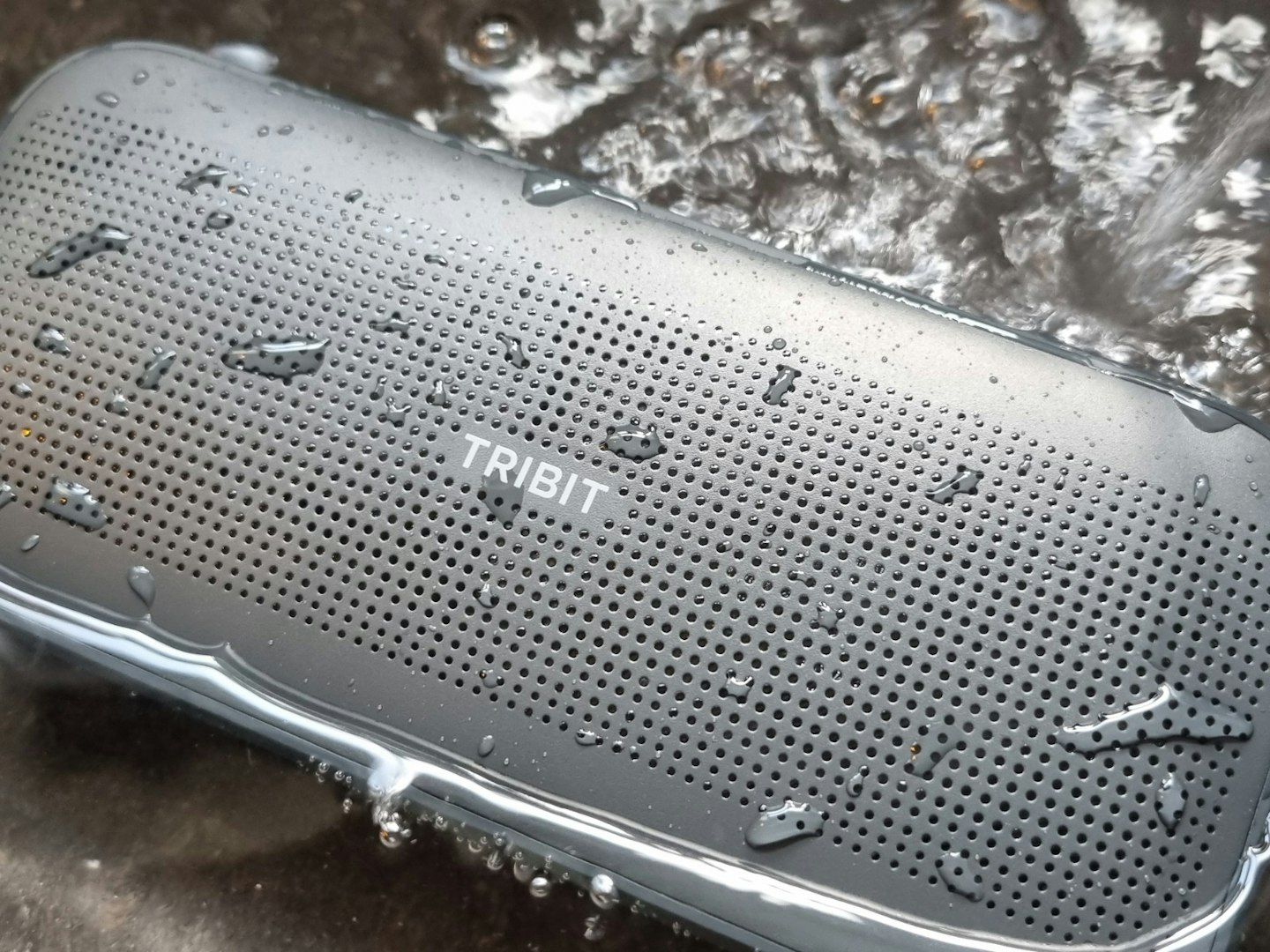
This speaker puts durability over looks, and I don't mind it too much. Out of all the Bluetooth speakers I've tested, this felt like the only one that could really take a beating. The metal speaker grille is largely to thank for that, as is the tough plastic body. Some types of plastic have a habit of being fingerprint magnets, but not this one though. Despite being used a lot outdoors, having soap spilt on it in the shower, and having survived being dropped multiple times by my clumsy self, the exterior hasn't even got a smudge.
Durability like this does come with a cost though, and in this case, it's not financial but in the Flow's weight. For people wanting to take this speaker on holiday, on a hike, or even just to the beach, this speaker being close to a kilo will probably put some people off. But as long as you know what you're in for, that extra weight goes to making the speaker better. With that said, I personally find it even more astounding that the speaker floats despite the weight. I really wasn't expecting it, and it gave me a surprise when I was testing the speaker outside.
The Tribit Flow's waterproofing is sound, as is standard among many speakers, but is still something to note. The floating enhances the waterproofing further, because of the IP rating. Though it's waterproof, it's only up to a certain depth for a certain amount of time. If a different speaker were to fall in the pool, it would sink to the bottom and all the lovely waterproofing would likely be for naught, as it would exceed the depth and potentially get damaged. The ability for the speaker to float would save this awkward and frustrating situation, and allow you more time to retrieve it. It's the simple things that make all the difference sometimes.
With all the toughness it brings, you'd expect there to be some concession on sound, but there isn't. Tribit continues to do the impossible and balance amazing features with a budget-friendly price tag. I do have some grumbles about the design, and that it very much puts function over form.
Unassuming exterior, bassy interior
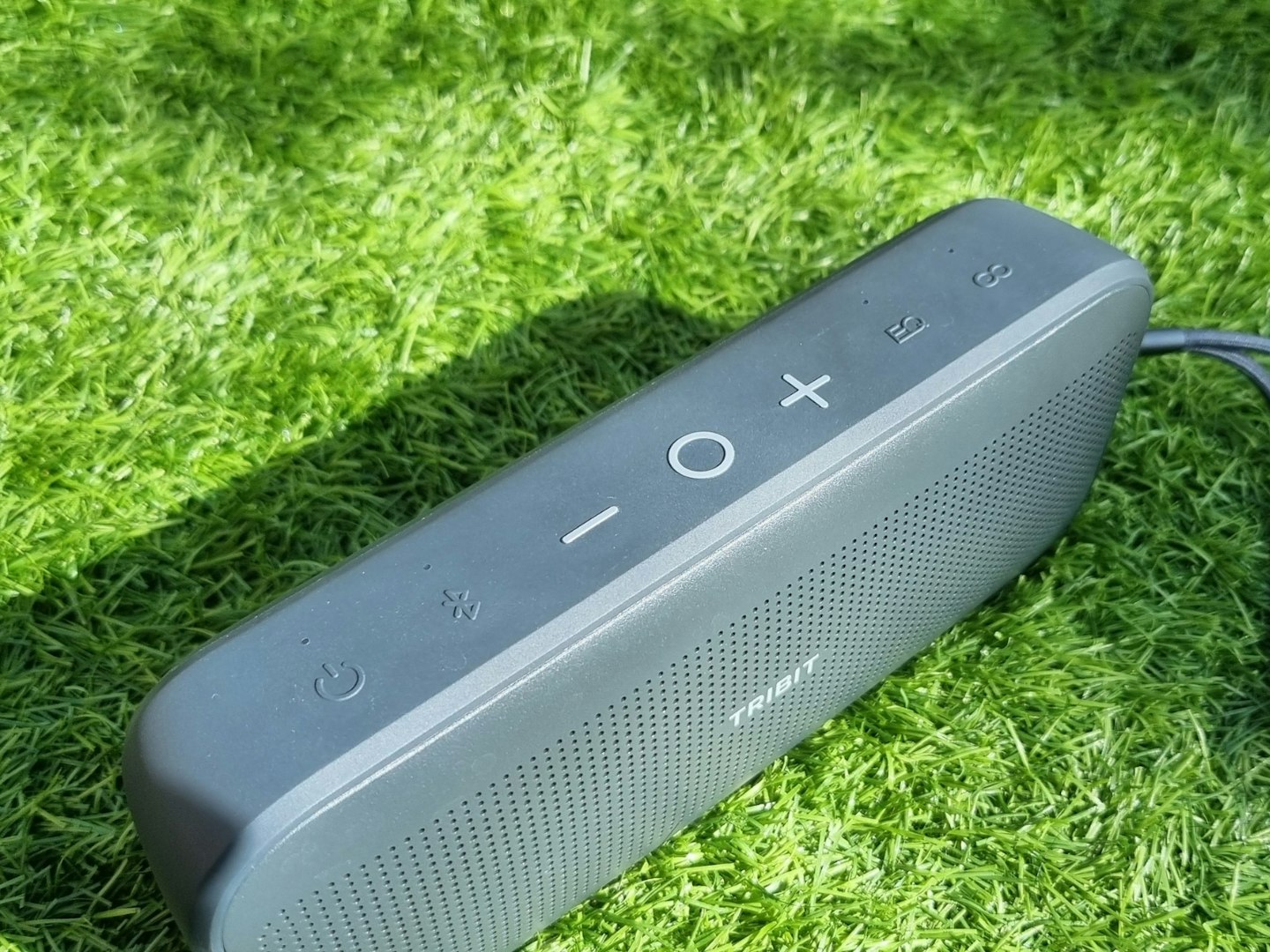
While there are some caveats to the durability – I've already mentioned the weight and the issues that might arise there – I will commend the shape of the speaker. It makes it very portable for just stuffing at the bottom of a backpack, unlike other speakers that favour the cylinder design, like Ultimate Ears or JBL. It has four small feet on the bottom, which mean you can listen to your music with it upright and facing you or laying flat down. This offers two different listening experiences, as the first is more direct and for individual listening, whereas when you lay it down it allows the speaker to disperse the sound better throughout a room.
I'll be the first to admit, though, that it isn't exactly going to be winning any beauty contests. There are no alternative colours, and the 'grey box' look is very unassuming.
Though the exterior doesn't leave much of an impression, the bass it's capable of certainly will. The X-Bass technology employed by Tribit is certainly well executed, the EQ button on top allowing you to access the deeper bass without needing to use your phone to configure it separately in the app. Tribit has warned that the X-Bass may drain the battery quicker than normal use, so keep an eye out for that when you use it. I normally configure each speaker I have with my own sound profile, but there were times when I listened with just X-Bass and it worked very well, even for songs not known for having a lot of bass.
But since the extra bass kick is known to drain battery, the last thing I'll nitpick about is that there is no charging indicator lights on the speaker. Only by going into the Bluetooth settings of my Samsung S21 Plus could I keep track of the battery life remaining. For something that doubles as a power bank, I think it should be important to be able to keep an eye on something like that, especially since the smaller Tribit Stormbox Micro 2 has five indicator lights.
Price and competition
The Bluetooth speaker market is saturated and so it can be hard to stand out amongst the competition. The closest comparisons I would make for the price is the JBL Flip 6, and the closest in design would be the Bose SoundLink Flex, the latter of which could be a distant cousin from the similarities. The JBL has better bass in my opinion, but that's not when taking the X-Bass boost into account, at which point the StormBox Flow would pull ahead in that particular area. I much prefer the Tribit EQ adjustment to the JBL options, allowing more fine-tuning for someone as particular as me, though it would take some familiarising for those who aren't familiar with an EQ graph.
As for the Bose SoundLink Flex, they are so visually similar that I found myself often mixing up the names, like identical twins in a 90s sitcom. Design similarities aside, it works as intended and if you want the look of a Bose without the price tag then Tribit have you sorted.
Who is it for?
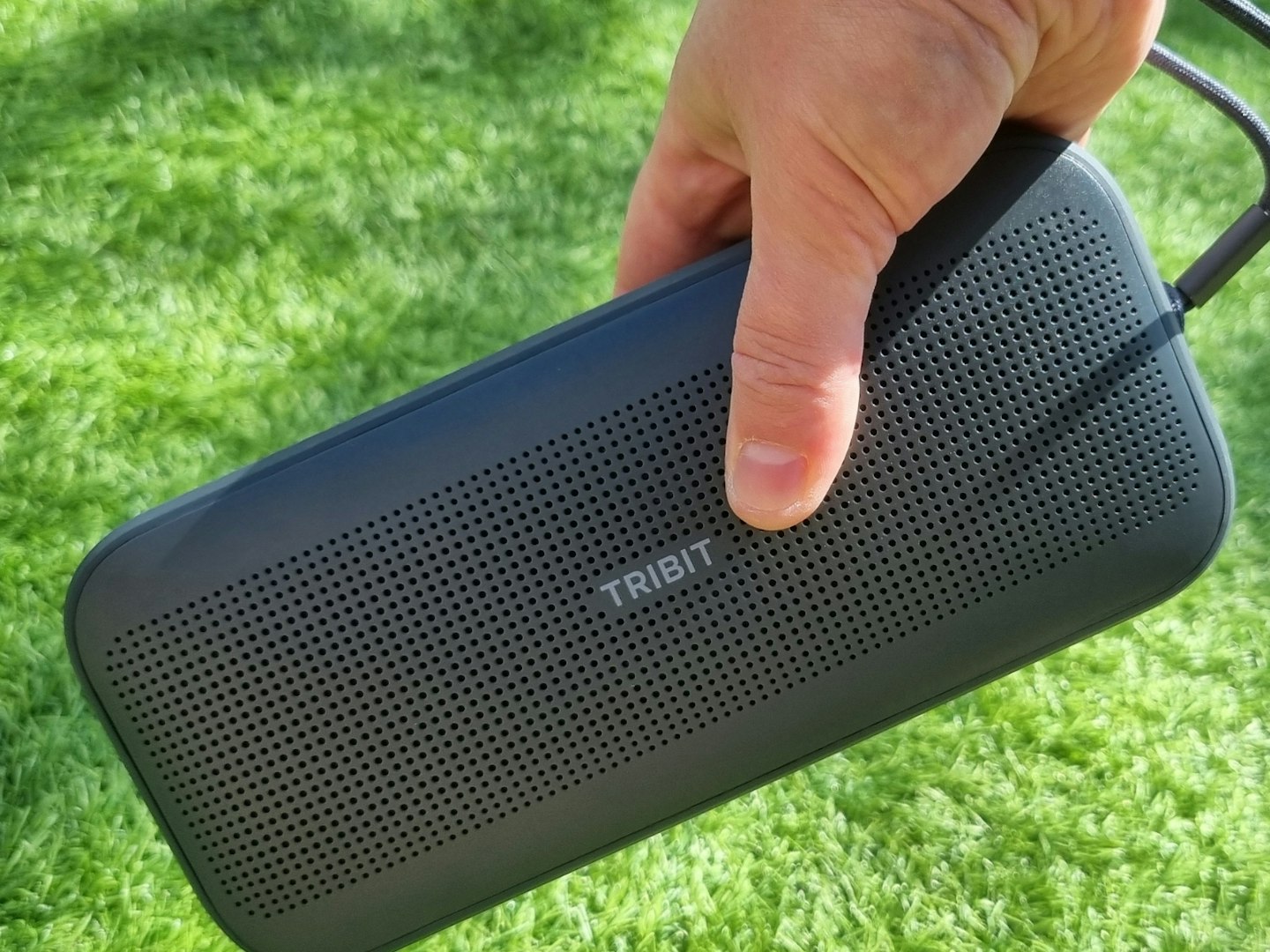
Owing to its size, portability and sturdy build, this is a perfect speaker for the wandering listener. If it's for a road trip, camping trip, hiking trip, whatever kind of trip that might get a bit bumpy, this brings the best sound-per-pound without feeling like it's something that should be looked after. Even if they aren't someone who cares too much about sound quality, it's guaranteed to be great here. With the Tribit StormBox Micro 2 I found that the top end wasn't particularly stunning out the box, and required adjustment. I didn't experience it here, and thanks to the EQ button many listeners could get away with no adjustments if they really wanted.
In short, it's perfect for the simple outdoors fan, who needs a speaker, doesn’t need to pay a lot and get the added bonus of the great features included.
Would we recommend it?
Given the size, the power and the features and the quality and the price, there is no way I couldn't recommend it. Though I have some reservations about the aesthetics of the speaker, this isn't enough for me to knock it down. I'm not someone who cares much about how my tech looks to other people, I don't understand much of the hype around the flashy phone covers, for example. This is a speaker that speaks to me in that that it does what's asked, does it very well, and doesn't make a fuss.
If they were to do another edition of the Flow, I would like to see the same level of durability, but perhaps some more colour options, for variety if nothing else. They're emulating the SoundLink Mini in many ways, why not take some inspiration from its colour options too?
Otherwise, there isn't much I can even think to say against this. This isn’t just a great budget speaker, it’s a great speaker that happens to be budget.
 Tribit
TribitPros
- Well-built but still portable
- Big bass at the touch of a button
- Hefty battery for long listening and charging your phone
Cons
- Design is rather plain
| Drivers | 62mm driver, 50-20KHz frequency response, passive bass radiator |
| Audio power | 25W |
| Connectivity | Bluetooth 5.3 |
| Battery life | 30 hours |
| Charging time | 4 hours |
| Waterproofing | IP67, floats |
| Dimensions | 222.8 x 114.8 x 58.9 mm |
| Weight | 666g |
More to consider
3.
JBL Flip 6
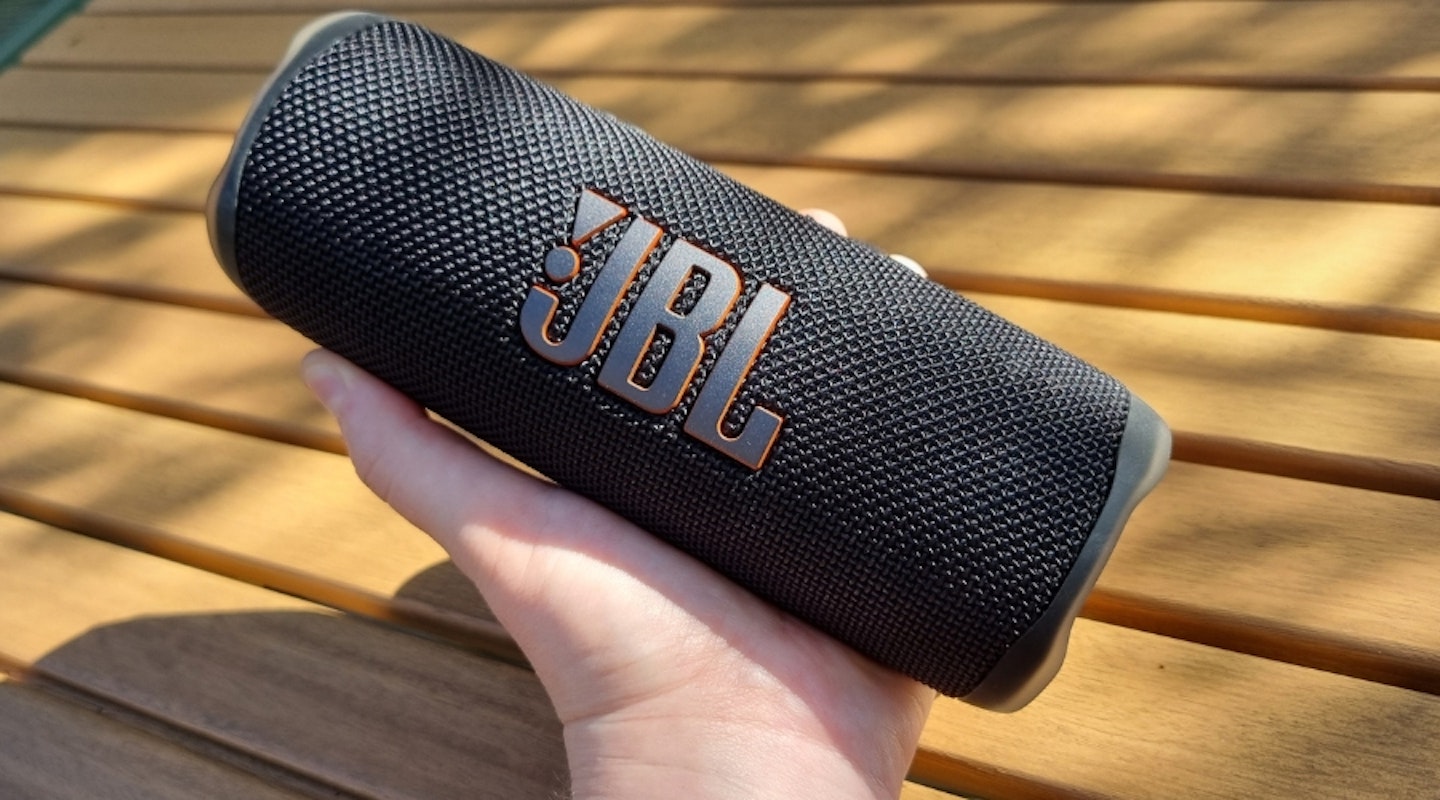 What's the Best/Olivia Sheed
What's the Best/Olivia Sheed This pint-sized speaker from the bass-heads at JBL is the perfect size to take with you on your adventures, and though the bass is heavy, the speaker won't weigh you down. With most of the features of the StormBox Flow, if you wanted a more compact experience, this is the speaker for you.
JBL have long been known as one of the best audio companies for bass on a budget, and the Flip 6 continues this tradition. Not only can it go wherever you need with the dust and waterproofing, the weight of it makes it perfect for taking on holiday. The included app allows you to adjust the EQ in limited ways, but it's still a great sound right out the box.
If that isn't enough to convince you, read our full review here.
Pros
- Beefy bass that defies its size
- Wide dynamic range for varied listening
- Compact and portable without sacrificing quality
Cons
- No power bank feature, unlike other speakers in its price range
| Drivers | Racetrack driver, separate tweeter, dual bass radiators |
| Output power | 30W |
| Connectivity | Bluetooth |
| Battery life | 12 hours |
| Charging time | 2.5 hours |
| Waterproofing | IP67, doesn't float |
| Dimensions | 178 x 68 x 72 mm |
| Weight | 0.55 KG |
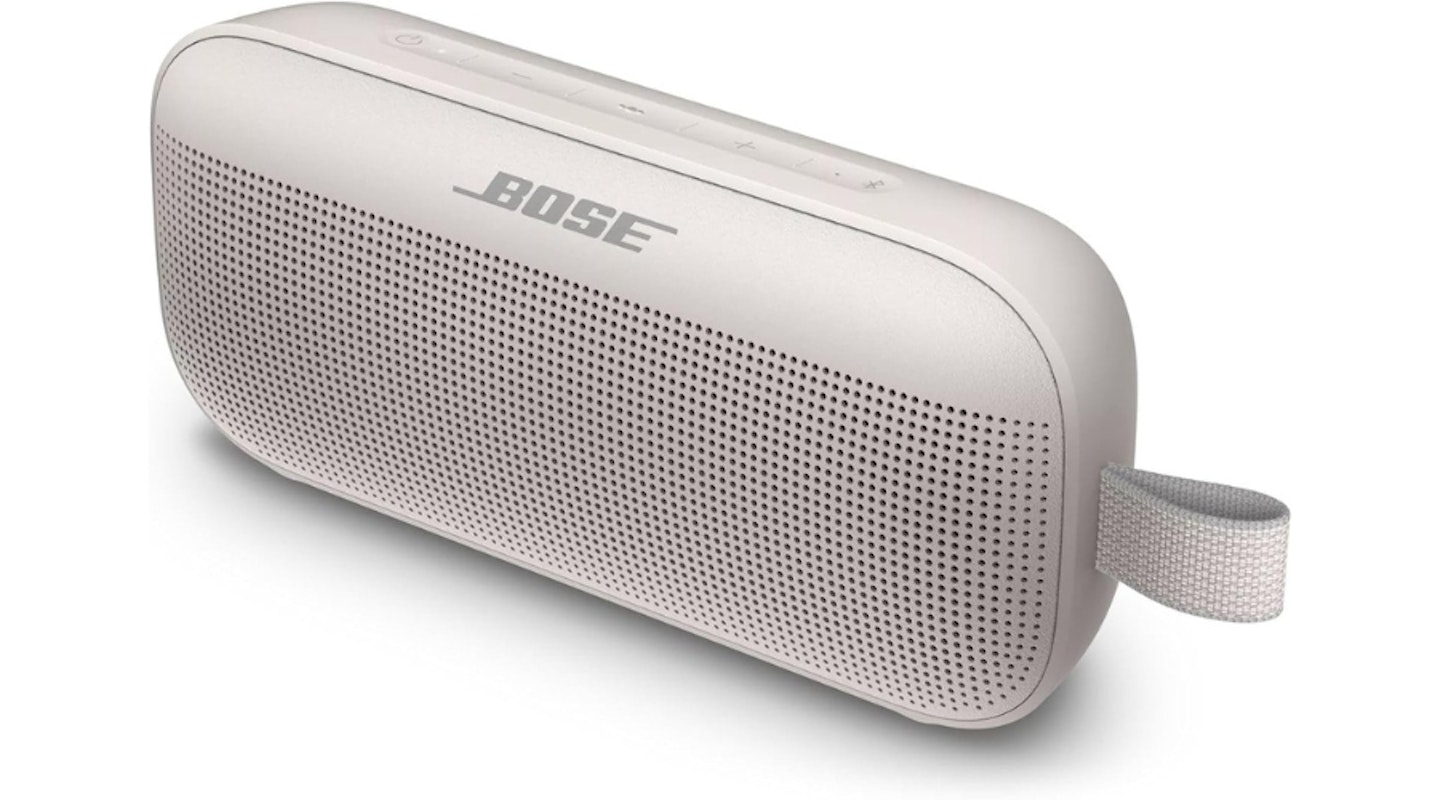 Bose
BoseThe visually similar big brother of the Tribit StormBox Flow, the Bose SoundLink Flex is a great high-end alternative to the budget Tribit. The Flex features most of the features of the Flow, adding the always amazing Bose soundscape, with punchy bass that never overpowers the music. Not only does it sound pretty though, the durability continues as the metal construction allows it to take as many hits as it needs.
It has an IP67 rating, as well as being floatable making it the perfect companion on boat trips or pool parties. Boasting a wide range of colours, you'll be sure to find a style to suit you. It could do with an update however, as the Bluetooth is quite out of date and thus from a connectivity standpoint, they are getting outpaced by the budget options. But for a colourful and stylish alternative, look no further.
Pros
- Outstanding sound, as is customary with Bose
- Built-in microphone to take calls
- Sleek design that will stand the test of time
Cons
- Bluetooth version is severely out of date
| Drivers | Custom-engineered transducer |
| Output power | 20W |
| Connectivity | Bluetooth 4.2 |
| Battery life | 12 hours |
| Charging time | 4 hours |
| Waterproofing | IP67, floats |
| Dimensions | 90 x 201 x 52 mm |
| Weight | 600g |
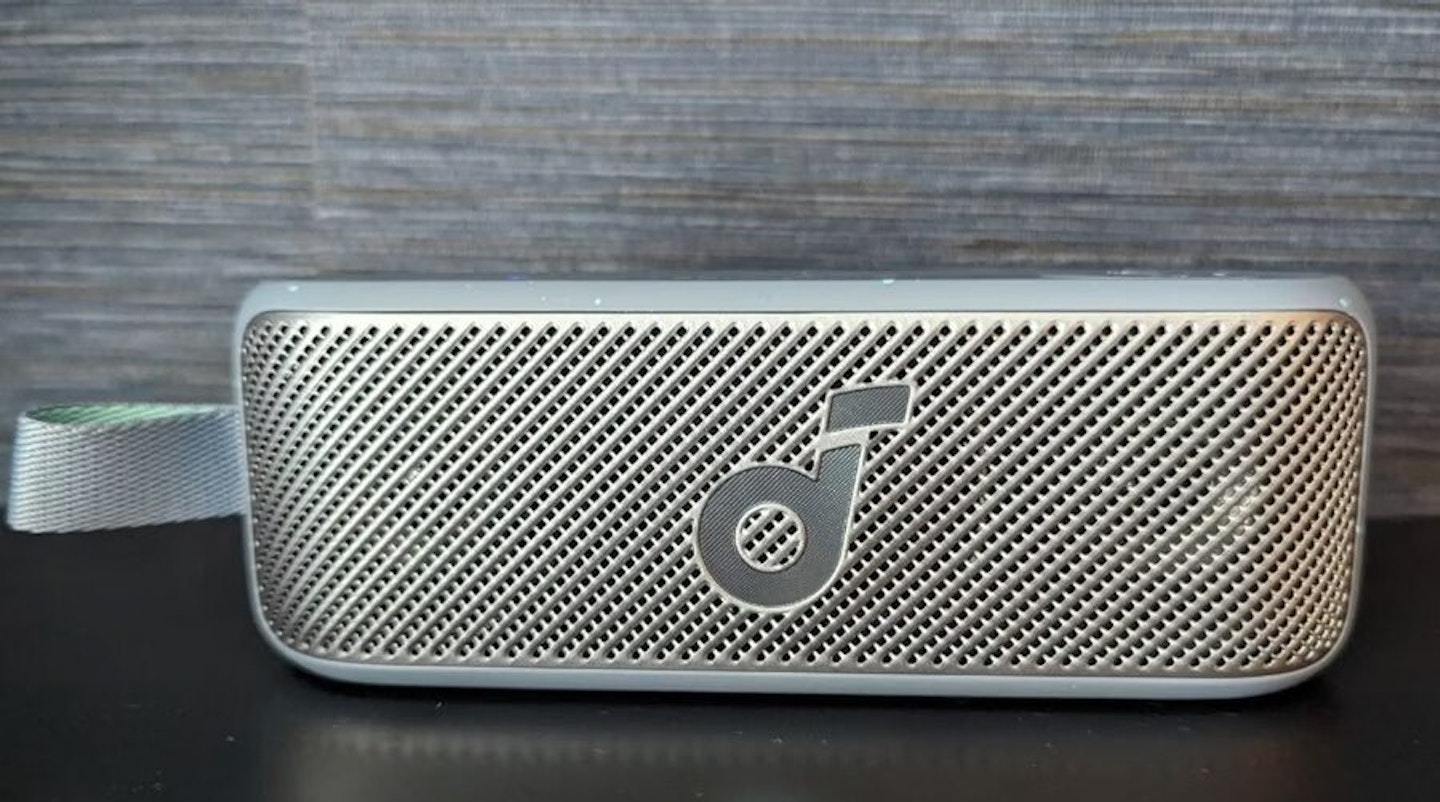 What's the Best/Kyle Purves
What's the Best/Kyle PurvesThe Soundcore brand is another great budget speaker brand that we at What's the Best have covered extensively, the Motion 100 (or 300) would act as the even more budget representitives for this tier of speaker. With an included bass boost button, it is a more customisable feature than the simple X-Bass activation buttton, though the bass on other Soundcore speakers was reportedly better executed.
It may be smaller than the Tribit, but that's all the better for taking with you on adventures to the beach, thanks to it's waterproofing. Though you should be a little more cautious with where you take this as it doesn't have a dustproof rating. For around half the price of the Tribit StormBox Flow though, it's definitely worth the money.
If you want to learn more, read our full review here.
Pros
- Lightweight and compact for taking with you
- Up-to-date internals
- Rich audio experience from such a small speaker
Cons
- Bass is weaker than other options from the brand
| Drivers | Two full-range drivers |
| Output power | 20W |
| Connectivity | Bluetooth 5.3 |
| Battery life | 12 hours |
| Charging time | 5 hours |
| Waterproofing | IPX7 |
| Dimensions | 66 x 200 x 88 mm |
| Weight | 689 g |
Who tested it?
Olivia Sheed is a tech writer for What's the Best, specialising in gaming technology, computers and portable audio. An audiophile, she has started to dip her toes in the realm of high-fidelity listening, thus making her a perfect fit for speaker testing. She listens to music in one way or another every day, if not every minute.
How we tested
For the duration of testing, the Tribit StormBox Flow replaced my JBL Flip 6 for a more direct comparison on what was different between two models from the same company. Kept at my desk, I'd connect via Bluetooth and listen whilst working, meaning this speaker has seen at least 25 hours of testing. The music used was all from Tidal for high-quality streaming, and crossed a range of genres that seek to push the speaker's frequency response to the limits. It has also been used in other use scenarios, such as for podcasts and watching movies, in a range of listening environments including outdoors and in the shower.
How What's The Best test products
Struggling to navigate the audio world? We provide unbiased reviews for real listeners.
At What's The Best, we ditch the technical jargon and deliver sound reviews for sound people. Our team of audio enthusiasts puts everyday speakers, headphones, and more through their paces in real-world listening scenarios. We don't waste your time with staged tests – we focus on how these products actually perform for everyday music lovers.
The result? Unbiased buying advice you can trust. We only review the most relevant and impactful audio products on the market, so you know you're getting the latest insights. Can't find a review for your specific gear? We're constantly expanding our review database, so stay tuned!
Want to dive deeper into how we test audio products? Visit our dedicated page detailing how we go about performing our audio reviews.
Olivia Sheed is a Tech Writer and Reviewer at What's The Best. Here she writes reviews, how-to guides and articles across all things technology.
Her interests align with "anything nerdy." Olivia is an avid fan of TTRPGs, board games, miniature painting, and video games. Outside of that, she loves to discuss horror films, campy classics such as those from Hammer Film Productions in the 70s are her favourite for a comfy watch. An avid hiker, she visits the Lake District often, for both walking and wild swimming.
Subscribe to the What's The Best Newsletter to keep up to date with more of the latest reviews and recommendations from the rest of the What’s The Best team.

